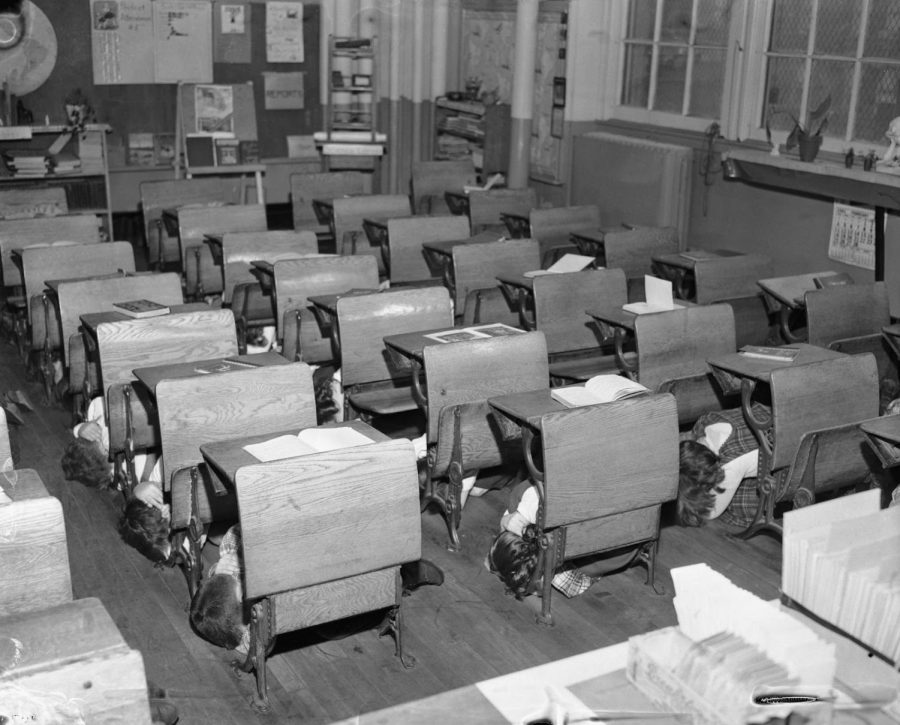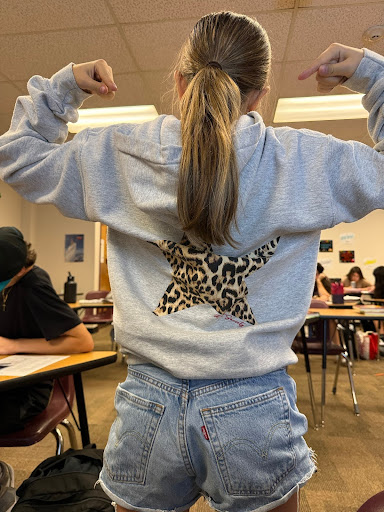Duck and Cover!
December 3, 2020
It’s hard going to school during this pandemic. But back then, students like you were not going to school in fear of getting sick, instead they had an overwhelming fear of total atomic annihilation.
After the Second World War the world was in a state of fear and distrust. The world thought the two global powers, the Soviet Union and the United States, were going to annihilate the entire world with nuclear warfare. People were also skeptical whether their neighbor was a communist sympathizer. So, what was it like for the children growing up during the Cold War?
Duck and Cover!
In 1951, a film was produced to help students know what to do when there is an atomic attack. The film’s main premise is when there is an atomic attack, duck and cover yourself immediately to protect yourself from the blast. Of course this is an educational kid’s film, so it has to feature a mascot. A cartoon character “Bert the Turtle,” known as a very cautious turtle, is used in the film to give an analogy to the duck and cover procedure. The film proceeds to explain that sometimes an attack can happen without any warning. This makes the film feel darker, and more real. It even gives you the feeling of fear, even years after the film was made.
“But sometimes, and this is very, very important: Sometimes the bomb might explode without any warning.”
The film then proceeds to show many situations of what could happen when an atomic bomb does go off without any warning. The standard procedure being ducking down onto the floor and covering the back of your head or neck to protect yourself from burns and debris. In reality, there is really no way to survive an atomic bomb, unless you are somehow very very lucky. The film was produced to keep the public calm during the Cold War. In fact, many other countries produced films and practices like “Duck and Cover” to keep the public calm and thinking that there is a way to survive one of the worst creations ever made by humanity.
The film is still watched by historians and is shown to today’s students to show why the atomic bomb was something everyone feared during the Cold War.
Atomic Drills
By using duck and cover, new atomic drills were made to help keep children and people safe from an atomic detonation. Schools even began to host atomic drills similar to fire drills. For a short period of time (about 10 minutes) the entire school will participate in a mock atomic disaster. The teacher will instruct the students to quickly hide under their desks and duck and cover. Many teachers will even demonstrate what to do when you are in the lunchroom, corridor, or in any other room in the school. The drills will start with the teacher explaining how duck and cover is beneficial. They will then shout “FLASH!” or “BOOM!” Students will then quickly duck and cover under their desks.
After the drill, the “Duck and Cover” film will be shown to give a better understanding to the students why they need to practice atomic drills. The teacher will also answer any questions from the students, and explain the difference between, an attack with a warning, and without any warning. Atomic drills were also practiced on buses, during recess, and randomized times during the day.
McCarthyism
McCarthyism is a campaign or practice that endorses the use of unfair allegations and investigations. During the Cold War, McCarthyism was used to blacklist civilians as communist sympathizers. Many actors and writers were accused of being communist sympathizers, even Charlie Chaplin has been accused of being a communist sympathizer.
In schools, many teachers and students were accused of being a sympathizer either if it was bullying, or falling victim to McCarthyism. This caused a lot of distrust among friends and teachers because almost everyone was not sure if someone was or wasn’t a communist sympathizer.
In conclusion, the fear of something has changed over the years, from nuclear annihilation, to getting a deadly virus. Of course, not everyone fears the same thing, however by learning our past we know that things change, slow or fast, and that we adapt and overcome.





